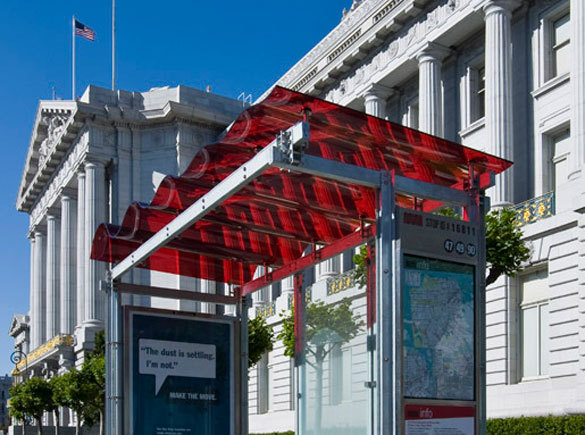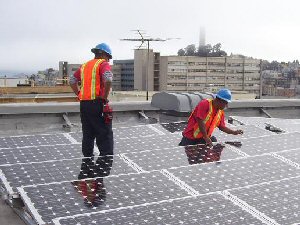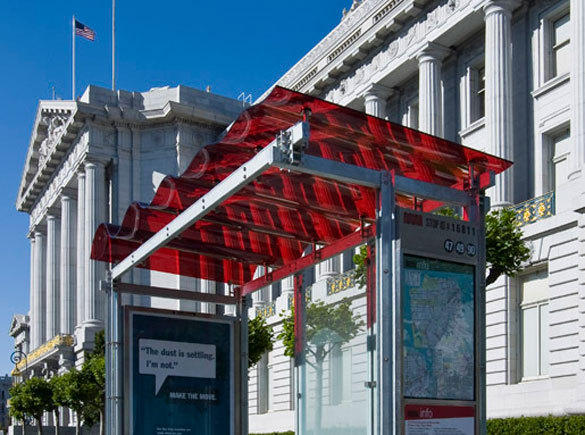 Photo: KonarkaOne of the holy grails of solar power has been to create very thin plastic solar cells that could be attached to just about anything to generate electricity — windows, awnings, bus shelters.
Photo: KonarkaOne of the holy grails of solar power has been to create very thin plastic solar cells that could be attached to just about anything to generate electricity — windows, awnings, bus shelters.
You can find very low-powered flexible panels embedded in backpacks and small solar chargers, but the challenge has been to increase the efficiency of such photovoltaic cells. Now a company that has spent years developing an organic solar technology, Konarka of Lowell, Mass., says its “Power Plastic” has set a new record, achieving a 8.3 percent efficiency rate in converting sunlight into electricity. The National Renewable Energy Laboratory certified the efficiency rating.
“This unsurpassed NREL certification opens new doors for the commercial production of cost-effective, efficient electricity for numerous large scale applications,” Howard Berke, Konarka’s chief executive, said in a statement.
Now, 8.3 percent is less than half the efficiency of a conventional crystalline silicon photovoltaic panel like those found on residential rooftops. But it’s a notable achievement for a solar cell that uses organic molecules to generate electricity. The great promise of organic molecules is that they can be produced at far less cost than standard silicon solar panels, but the low efficiency of organic photovoltaics has limited their use.
If Konarka can maintain the increased efficiency in mass production, it may be able to expand the market for its power plastic. After all, it wasn’t too long ago that crystalline silicon panels were barely 10 percent efficient.
(I got a look at just how long scientists have been working on this technology when I recently visited a solar power plant in Davis, Calif., that served as a testing ground for photovoltaic technologies in the 1980s and ’90s. In one corner stood a rack featuring early versions of the type of modules Konarka makes.)
A couple of years ago, a Konarka executive showed me just how portable and easily installed photovoltaic plastic can be. He pulled a roll of solar modules out of a briefcase and unfurled them on a table. Within a few minutes they were powering a lamp.
If you happen to be in San Francisco, you can spot Power Plastic modules at bus stops. The modules are embedded in the wave-shaped red roofs of the bus shelter and power its lights, as well as Wifi routers for web-surfing passengers.
The city plans to solarize 300 bus stops, which would generate 43,000 kilowatt-hours a year.
Now that’s fantastic plastic.



